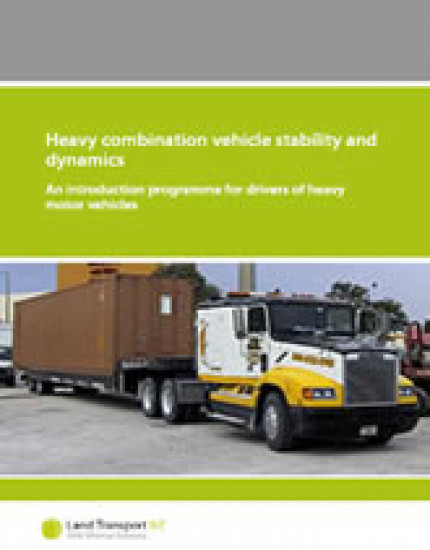An introduction programme for drivers of heavy motor vehicles

New Zealand has a high incidence of rollover and loss-of-control crashes for distance travelled compared with other countries such as the United States and Canada. Rollovers occurred in 29 percent of the heavy vehicle crashes attended by the New Zealand Police Commercial Vehicle Investigation Unit between July 1996 and November 1999.
This high number of rollover and loss-of-control crashes reflects New Zealand's difficult driving conditions. The country has more bridges, corners and hills per 100 kilometres of road, and fewer divided highways, than most other developed countries.
Drivers of large vehicles have an obligation to drive considerately and professionally at all times. Rollovers in single-vehicle crashes involving trucks often reflect the drivers' poor appreciation of the general dynamics and stability issues of the vehicle.
The majority of the factors that influence the stability and dynamics of heavy combination vehicles also influence the stability and dynamics of heavy rigid vehicles.
Vehicle dynamics:
This term refers to the motion of a motor vehicle and the various forces that act upon the vehicle when it is in motion.
An often overlooked aspect of the dynamics of motor vehicles is that in the majority of situations a vehicle has to be moving before the forces acting on it affect its performance. Thus (with only a few minor exceptions) a person - the driver - must make the vehicle move. It follows then that if the person in control of the vehicle is making it move then this person should have total control over whether the dynamics of the vehicle will be a contributing factor in any crash the vehicle may be involved with.
Page created: 3 February 2009